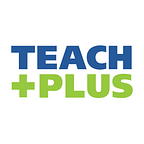Helping Special Needs Students Realize Their Potential through Technology in the Classroom
By Heather Gauck
For the past three decades, I have taught students with a range of learning disabilities. Sometimes, in response to the challenges they face, my students may exhibit extreme unwanted behaviors. Even before becoming a teacher, I understood the challenges these kids face because I saw what it takes to go through school with a disability. My two adopted brothers, who each have learning disabilities, have struggled with executive functioning skills, speech difficulties, and occupational and physical deficits. I watched my parents advocate for their social, educational, and emotional needs. When I became a special education teacher, I developed a toolkit of hands-on strategies that helped my students connect with learning using sensory integration tools, games, and differentiated instruction.
Technology immeasurably expanded this toolkit. Joshua could not read when given a book. Yet, I watched in amazement as he used an iPad to create words and have it read the text to him aloud. Sarah improved her reading ability as she recorded herself reading, listened, and then shared her progress with her parents using an app on her iPad. By listening to a recording of herself reading, Sarah learned how to improve her fluency and remained motivated to learn because she could share her progress with the people who loved her. Joe grew his vocabulary by making videos with a greenscreen to explain the words he was learning. The technology gave him what he needed to grasp the meaning of each new word. Technology helps my students develop higher-order thinking skills, ultimately enabling them to find out what success looks and feels like in the classroom. Students like Joshua, Sarah, and Joe have a voice that can now be heard through the use of technology.
But technology is only as good as the teacher who knows how to integrate it into the classroom and now more than ever, teachers must learn how to use it to elevate student learning. Teachers need to become technology integration experts by using it to inform instruction, support teacher collaboration, and personalize learning. This includes giving students grade-level texts they can access by audio recording, the option to share their thinking through voice to text, as well as ways to show what they know in a way that builds upon their strengths and preferences. Making grade-level materials accessible through the use of technology can increase educational equity.
Just as it is important to differentiate for students, we must differentiate for a teacher’s professional development needs. Teachers should have choices to learn about the technology that inspires and fits into their classroom needs. House Bill 5108, currently before the Michigan legislature, begins to address the need for technology professional development and integration by requiring that the annually updated school improvement plans, which already require schools to outline the “methods for effective use of technology as a way of improving learning and delivery of services and for integration of evolving technology in the curriculum,” would also need to include implementation of “targeted professional development plans for each teacher employed by the school.” In other words, schools that already are required to annually spell out how they are going to effectively incorporate technology in instruction and curriculum, or face losing accreditation, will now also need to include how they will support the individualized professional development of each educator. This would allow for more differentiated professional development opportunities, including training in technology.
While the bill was introduced and referred to committee last June, it has not moved beyond that. In order to make sure educators receive the professional development needed to integrate technology to push higher level thinking skills, let’s urge members of the Michigan House Education Committee to call the bill for a hearing. With the appropriate training, educators will be able to make grade-level curriculum accessible to all learners with some simple tools that technology provides. Rather than feeling frustration and failure, students can then learn to be independent and gain a sense of success.
As I watch my students navigate technology efficiently in order to complete required schoolwork, I am hopeful and encouraged. For years, small steps of remediation were the norm, and now I focus on acceleration with the added support of technological tools. As Joshua, Sarah, and Joe learn these tools and practice them in my classroom, I see that they are gaining independence with the help of these accessibility tools. In order to enable our students to become the leaders of tomorrow that they are destined to be, we must create teacher leaders in technology today.
Heather Gauck is a resource teacher for Grand Rapids Public Schools, Michigan. She is a member of the Michigan Teacher Leadership Collaborative, which is a highly selective program for equity-minded educators co-convened by The Education Trust-Midwest and Teach Plus.
